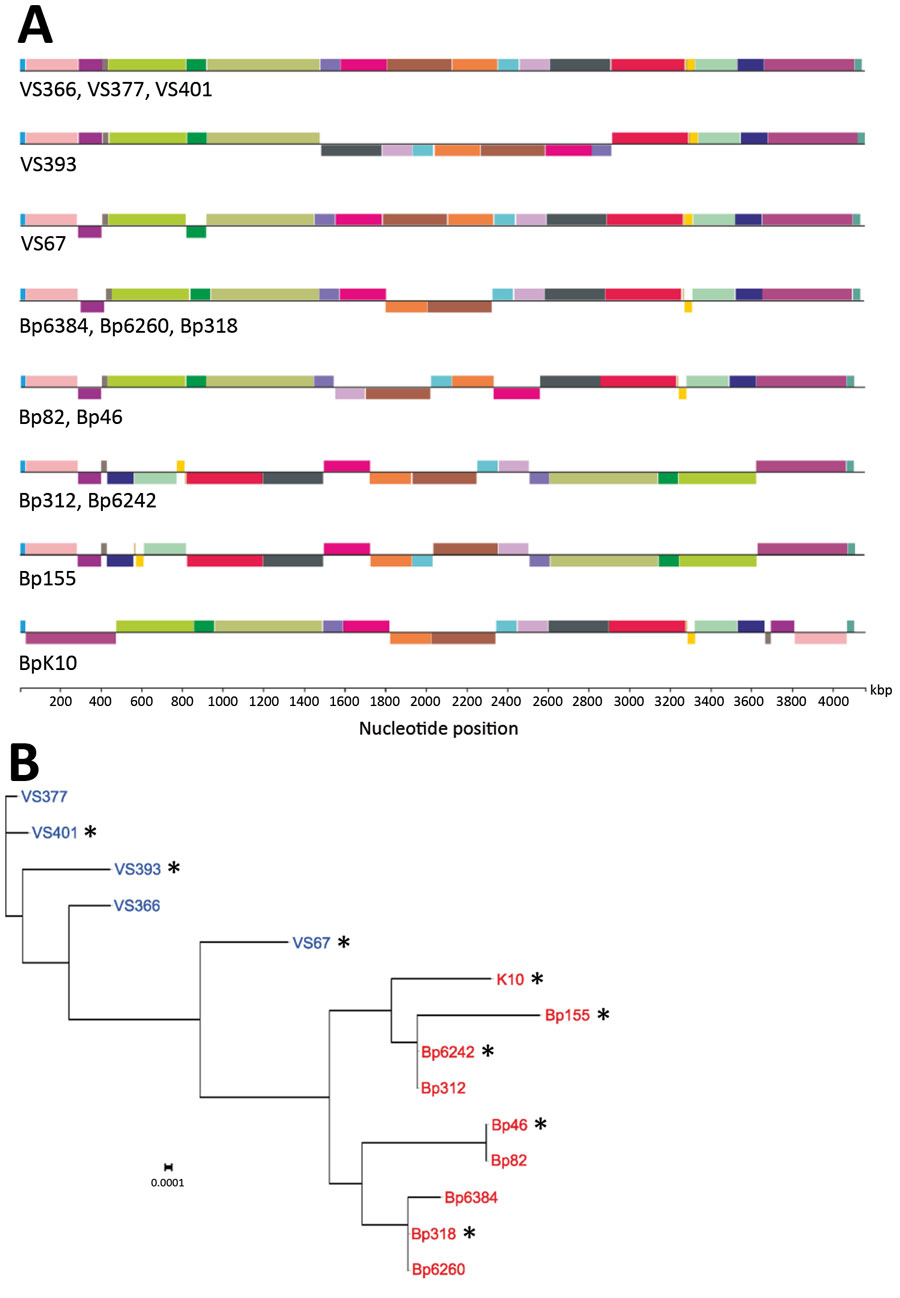Volume 27, Number 1—January 2021
Research
Comparative Omics Analysis of Historic and Recent Isolates of Bordetella pertussis and Effects of Genome Rearrangements on Evolution
Figure 2

Figure 2. Genomic analyses of Bordetella pertussis isolates from the Czech Republic. A) Genome alignment of historic and recent isolates showing large-scale genome rearrangements. Homologous gene blocks are denoted by the same color. B) Maximum-likelihood phylogenetic tree based on genomic organization of historic (blue) and recent (red) isolates. Asterisk (*) indicates strains selected for transcriptomic and proteomic analyses. Scale bar indicates nucleotide substitutions per site. kbp, kilobasepairs.
Page created: September 01, 2020
Page updated: December 21, 2020
Page reviewed: December 21, 2020
The conclusions, findings, and opinions expressed by authors contributing to this journal do not necessarily reflect the official position of the U.S. Department of Health and Human Services, the Public Health Service, the Centers for Disease Control and Prevention, or the authors' affiliated institutions. Use of trade names is for identification only and does not imply endorsement by any of the groups named above.